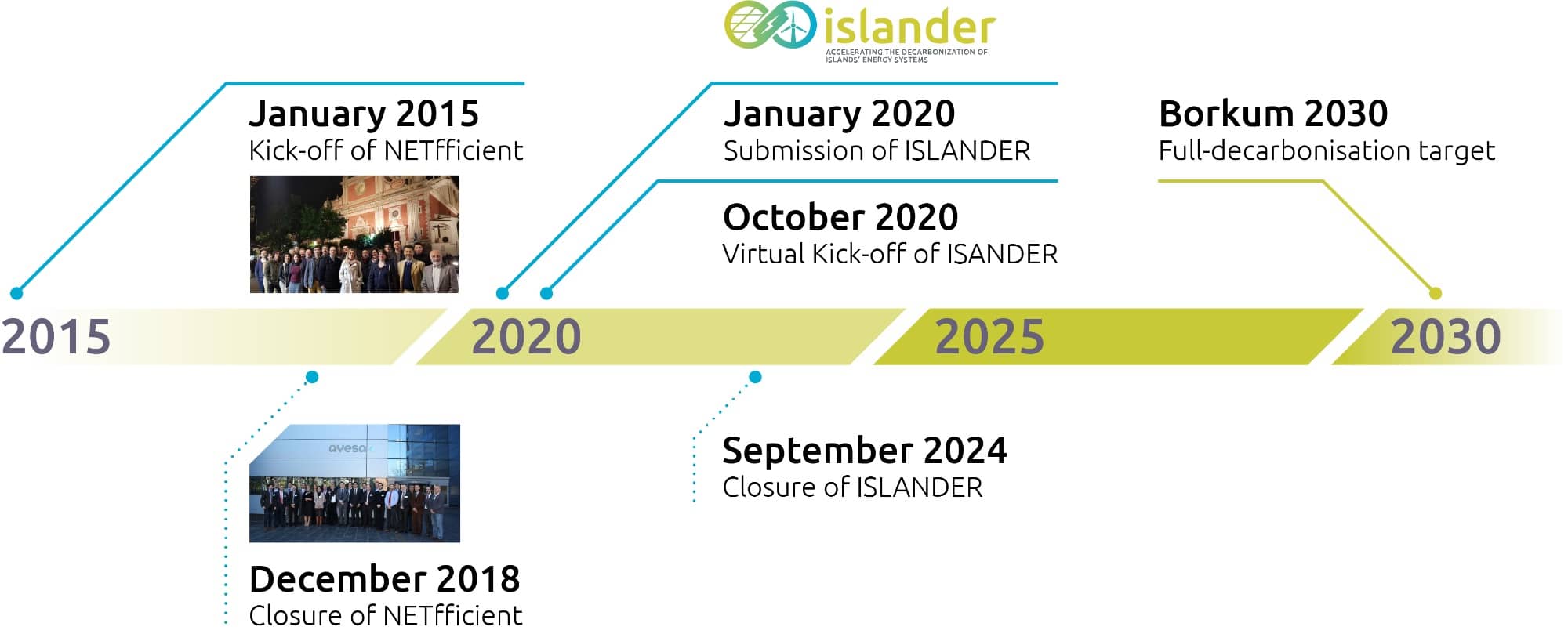Following concerns of the population regarding air quality due to a new coal fired power plant on the Dutch coast, Borkum started on a path towards renewable energy many years ago. Yet the challenges associated with the intermittent nature of power supplied by such renewable sources currently remain: Consumption peaks cannot be met by solar and wind energy and expensive grid electricity needs to be bought in. Vice versa, peak generation leads to energy exports at unfavourable conditions. A logical step to tackle this challenge is to investigate energy storage, which was indeed the research objective of the previous Horizon 2020 NETfficient project coordinated by partner AYESA.
The NETfficient project:
- Begun in 2015 and finished by the end of 2018.
- Validated several types of local storage technologies in combination with photovoltaic production in the electricity grid of Borkum, increasing their readiness levels through extensive prototype testing
- Deployed distributed photovoltaic installations adding up to 279 kWp and a power-to-heat aquarium installation




Follow us